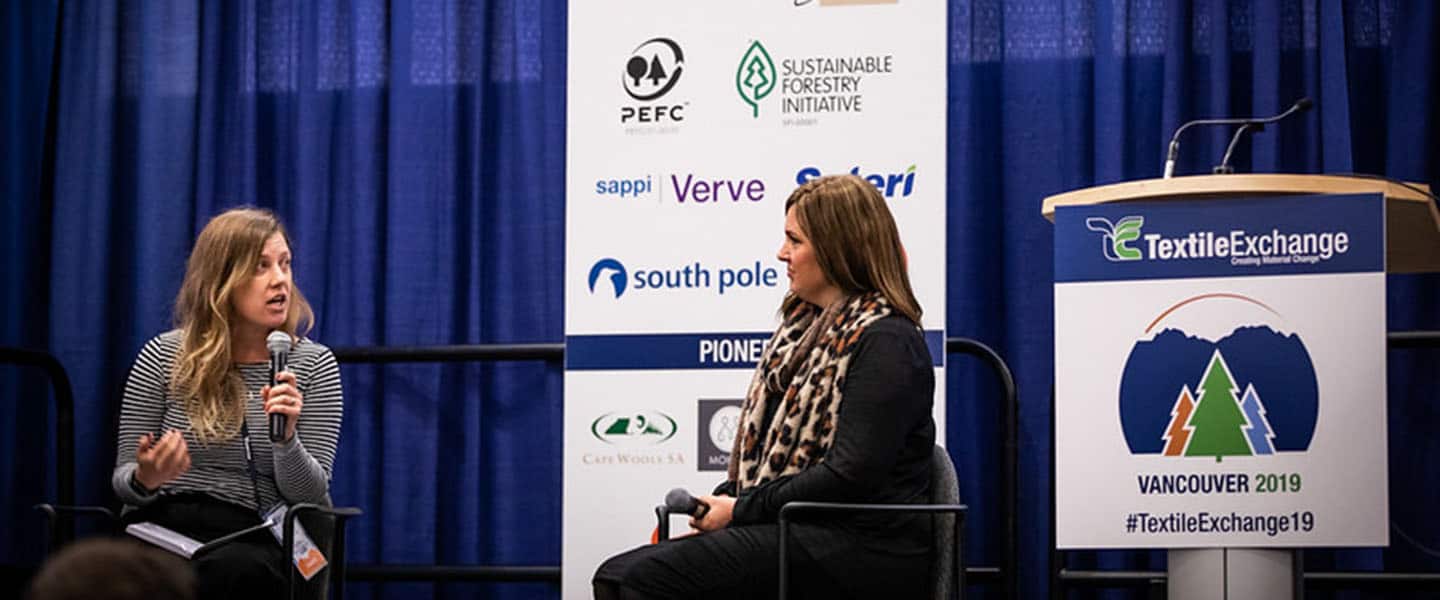Sustainability is important in agriculture, but efforts to preserve and utilize resources efficiently aren’t limited to crop fields.
Farming practices are just one piece of a big puzzle, says Ashley Gill, former Mesa District FFA president in Texas and current director of standards at Textile Exchange, a global nonprofit that establishes benchmarks for sustainable materials within the textile supply chain. The goal is to connect responsible producers with conscious retailers and vice versa.
Ultimately, it’s for transparency. Not only so that farmers know how their products are being used, but also because “more than ever, consumers want to know what they’re contributing to,” Gill says, pictured above (left). They especially “have an expectation that brands are doing due diligence” in sourcing sustainably.
To determine what makes a preferred product or process, Textile Exchange facilitates roundtable discussions among key players throughout the supply chain. Some of this input is developed into a set of criteria or a standard for members of the supply chain to earn certification as a responsible supplier or retailer. Some examples of requirements Textile Exchange standards cover include use of recycled content, environmental protections, rotational grazing for livestock and no-till farming.
Why are such standards important? For brands, they face risks of not addressing issues such as workers’ safety or pollution. For Gill, who grew up on a cotton farm in New Home, Texas, it’s a little more personal: “I think a lot about the overlap between sustainability and quality of life for people in the industry,” she says. “There are people working in garment factories who don’t have enough to live on or who aren’t protected from the chemicals they’re using every day — those kinds of things are so important to me because I know firsthand what it’s like to have a really positive [production] experience, and I don’t think it’s fair that not everybody has that.”
For the environment, standards are critical to protect efficient and effective production. Efforts to sequester carbon can prevent carbon emissions, which affect global temperature and rain patterns, putting more effort and unpredictability into farming. Textile Exchange has a goal to reduce greenhouse gas emissions by 45% by 2030 and is currently determining which materials can help achieve that.
For consumers who want to impact textile sustainability, “You have influence, but it’s not only your responsibility,” Gill says. Brands shoulder the heavy lifting, but you can make a difference by using your voice to demand more responsible practices, or purchasing less often, better quality and secondhand.












